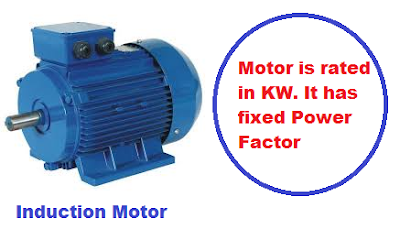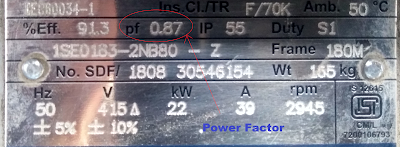The induction motor and the transformer work on the same principle, that is, Faraday’s law of electromagnetic induction. The motor is rated in kW instead of KVA, and the transformer is rated in KVA instead of KW.
The transformer and alternator are designed based on apparent power(kVA). The power factor at the incoming supply side of the transformer depends on the types of loads connected to the transformer’s secondary, i.e., the load may be resistive, inductive, or capacitive. The designer does not know at what power factor the user will operate the transformer.

On the other hand, the motor has a fixed power factor at its full load current. All the motor data- voltage, current, and power factor are given on the motor’s nameplate. The motor is designed to drive the mechanical load of a particular rating.
The motor draws active power from the mains and converts it into mechanical power. The reactive power drawn by the motor to meet its magnetizing power requirement does not convert into useful work.
The motor is designed to deliver the rated KW or the shaft power at the rated voltage, current, and power factor. When the motor is 100% loaded, it delivers the rated KW at the rated voltage, current, and power factor. The power factor is specified for the rated full load current of the motor. The active power drawn by a three-phase induction motor is
P = KVA x Power Factor
P =√3 V I Cosφ
Where,
V = Line Voltage
I = Line current
Cosφ = Power factor
The following motor data is engraved in the nameplate of the motor.

The motor is rated in KW as the voltage, current, and power factor is specified for the motor.

1 thought on “Why Motor rated in KW instead of KVA?”